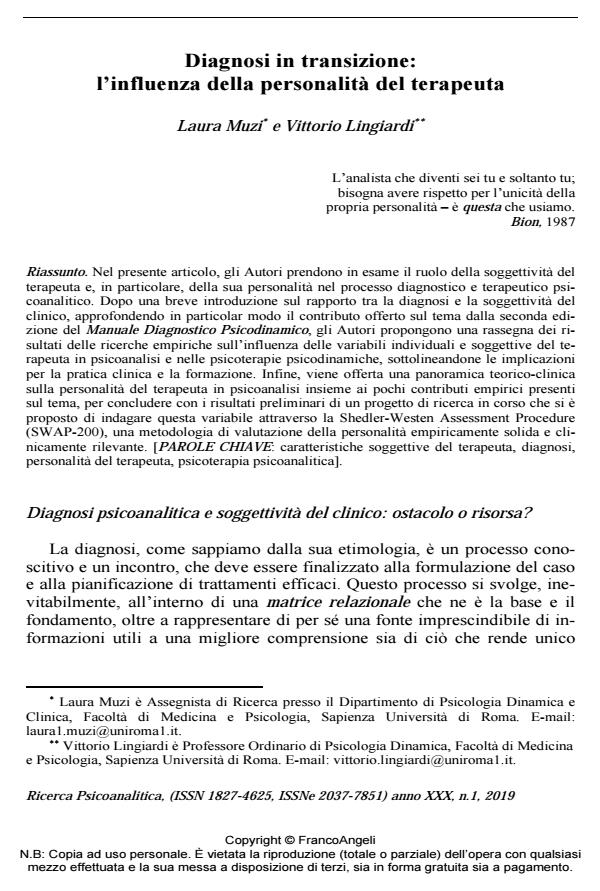Diagnosi in transizione: l’influenza della personalità del terapeuta
Titolo Rivista RICERCA PSICOANALITICA
Autori/Curatori Laura Muzi, Vittorio Lingiardi
Anno di pubblicazione 2019 Fascicolo 2019/1
Lingua Italiano Numero pagine 18 P. 73-90 Dimensione file 206 KB
DOI 10.3280/RPR2019-001006
Il DOI è il codice a barre della proprietà intellettuale: per saperne di più
clicca qui
Qui sotto puoi vedere in anteprima la prima pagina di questo articolo.
Se questo articolo ti interessa, lo puoi acquistare (e scaricare in formato pdf) seguendo le facili indicazioni per acquistare il download credit. Acquista Download Credits per scaricare questo Articolo in formato PDF

FrancoAngeli è membro della Publishers International Linking Association, Inc (PILA)associazione indipendente e non profit per facilitare (attraverso i servizi tecnologici implementati da CrossRef.org) l’accesso degli studiosi ai contenuti digitali nelle pubblicazioni professionali e scientifiche
Nel presente articolo, gli Autori prendono in esame il ruolo della soggettività del terapeuta e, in particolare, della sua personalità nel processo diagnostico e terapeutico psicoanalitico. Dopo una breve introduzione sul rapporto tra la diagnosi e la soggettività del clinico, approfondendo in particolar modo il contributo offerto sul tema dalla seconda edizione del Manuale Diagnostico Psicodinamico, gli Autori propongono una rassegna dei risultati delle ricerche empiriche sull’influenza delle variabili individuali e soggettive del terapeuta in psicoanalisi e nelle psicoterapie psicodinamiche, sottolineandone le implicazioni per la pratica clinica e la formazione. Infine, viene offerta una panoramica teorico-clinica sulla personalità del terapeuta in psicoanalisi insieme ai pochi contributi empirici presenti sul tema, per concludere con i risultati preliminari di un progetto di ricerca in corso che si è proposto di indagare questa variabile attraverso la Shedler-Westen Assessment Procedure (SWAP-200), una metodologia di valutazione della personalità empiricamente solida e clinicamente rilevante.
Parole chiave:Caratteristiche soggettive del terapeuta, diagnosi, personalità del terapeuta, psicoterapia psicoanalitica
- Ricerca clinica e ricerca empirica Emilio Fava, in Ricerca Psicoanalitica /2021
DOI: 10.4081/rp.2021.309
Laura Muzi, Vittorio Lingiardi, Diagnosi in transizione: l’influenza della personalità del terapeuta in "RICERCA PSICOANALITICA" 1/2019, pp 73-90, DOI: 10.3280/RPR2019-001006